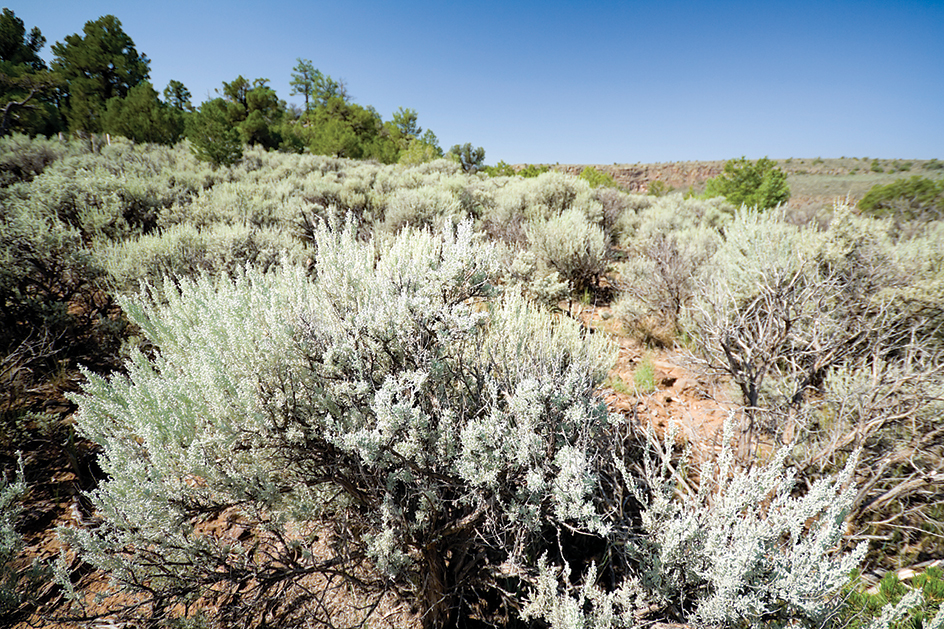Sagebrush is a shrub known for its sweet odor and bitter taste. It grows on the dry plains of the western United States, particularly in northeastern California, eastern Oregon, Nevada, Utah, Wyoming, and Colorado. The plant may grow to any height from 2 to 12 feet (0.6 to 3.7 meters) and has a straight, stiff stem. The leaves are small and grow close together. The flowers grow at the top of the stem and may be yellow or white. Each consists of many tiny flowers called florets.

Sagebrush flourishes in the dry soil of the Western plains, where many other plants cannot grow. But it also grows on mountain slopes. Sometimes the heat and dryness in the summer dry up the plant so much that it shows no sign of being alive. Then, the wind often uproots the plant and blows it all over the plains. Sagebrush seeds are scattered in this way. Often sagebrush is the only plant life for great distances.
Sagebrush is not true sage, a plant used widely for seasoning (see Sage). Sagebrush received its common name from the sweet, sagelike odor of its crushed foliage. There are several types of sagebrush. Some are used as food for sheep in the winter. Some people use sagebrush for fuel, because the dry wood burns with a hot flame and gives off a sweet-smelling smoke. Sagebrush can also be cultivated for domestic gardens.
